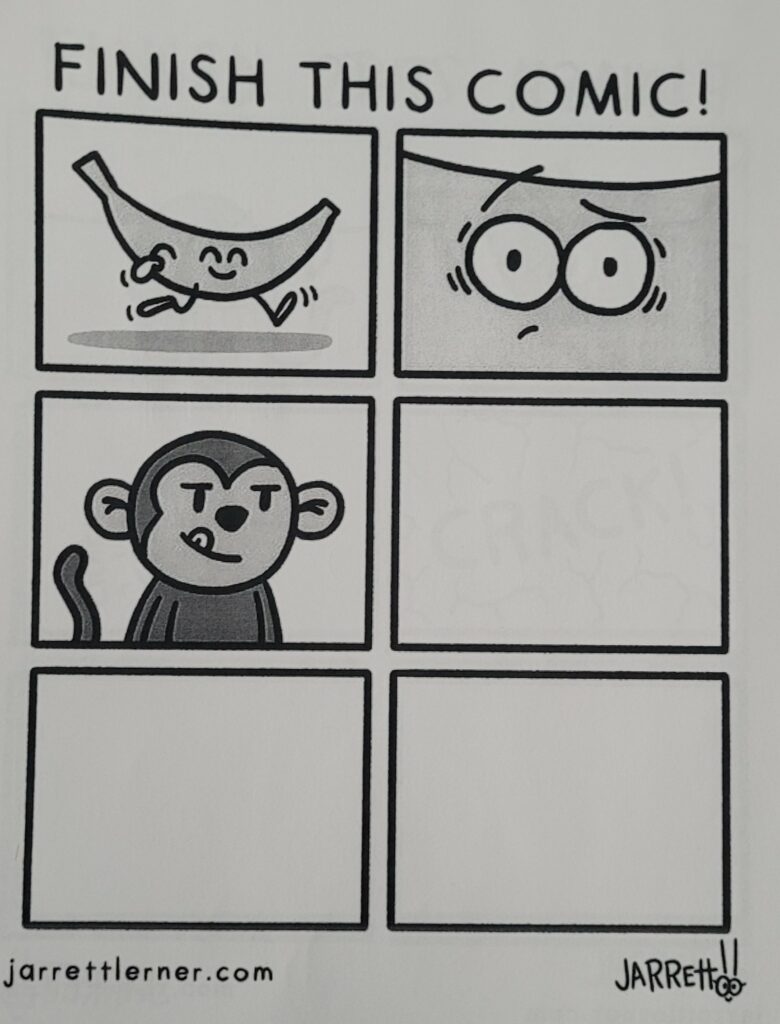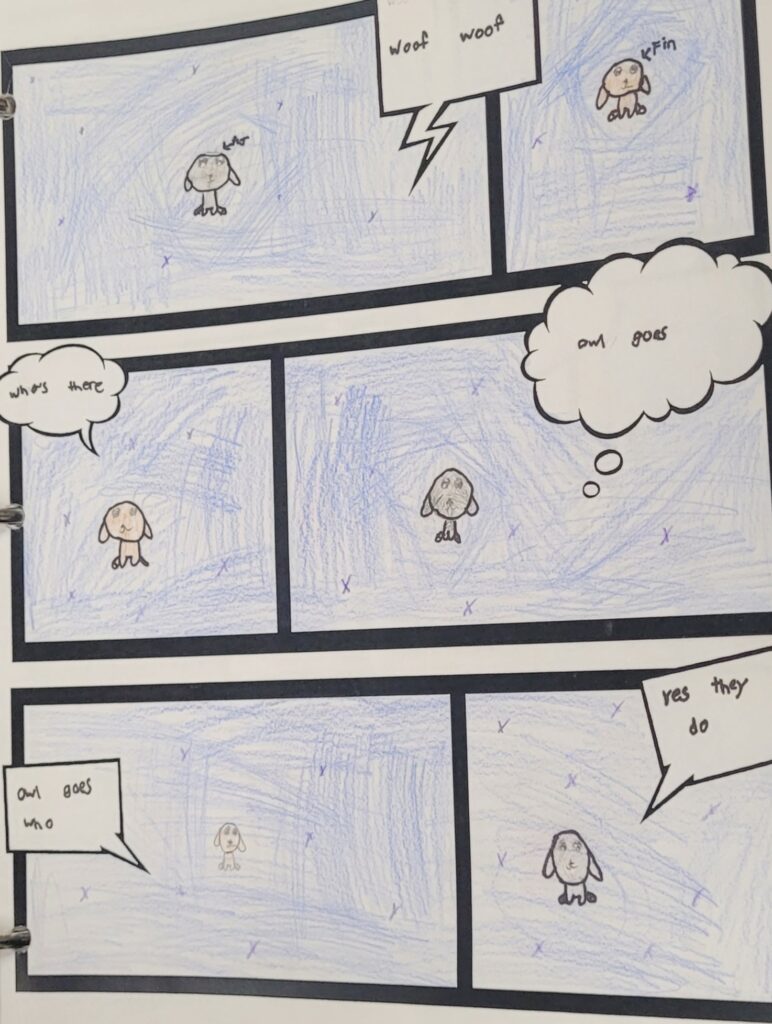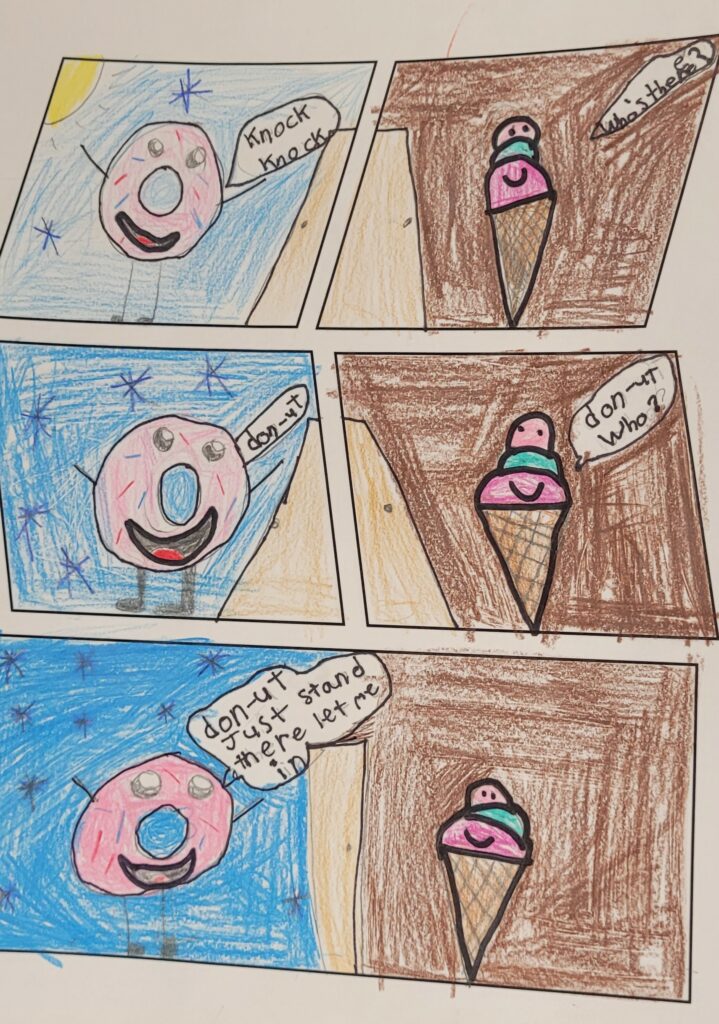The lesson I got to observe in the ⭐ classroom made me super envious. I’ve always loved comic books, manga, and other graphic novels, and these students were lucky enough to receive a literacy lesson that focused on designing a page in the style of a graphic novel. This lesson was heavily cross-curricular with art, as the lesson incorporated art concepts such as the PIE method: Pencil, Ink, and Erase. Dave McDonald’s YouTube series, Kids Make Comics, is a valuable resource to give students the artistic tools to draw their comics. However, the lesson also focused on elements that are critical to effectively reading graphic novels.
Panel Sequencing
The order of panels is support important! If you don’t know that you must read left to right from the top down, similar to how we read sentences, the timeline of the story won’t make sense. Understanding this element of graphic novels is critical to literacy fluency in this medium.

Text Bubbles
Since graphic novels rely more on visual cues than text-based narration, it’s important to understand the information conveyed by different styles of text bubbles. Text bubbles always have some form of arrow to indicate the character that the content of the text bubble is attributed to. Dynamic text bubbles with pointy edges tend to convey louder voices, or even sounds in the form of onomatopoeias, while fluffy text bubbles with a series of circles in the place of an arrow indicate a thought that is not audible to the other characters in the story. The student sample below suggests that recognizing thought bubbles is still a work in progress for them.

Panel Separation
Panel separation is used to indicate the separation of characters. In the student sample below, panel separation is used to indicate that the door is separating the two characters. On the last panel, both characters are finally connected on the same panel, indicating that the door has been opened and the characters are no longer separated.

Curricular Connections
One of the Big Ideas for the grade 6 ELA BC curriculum listed is “Language and story can be a source of creativity and joy”. The comic pages designed by the students were definitely a source of joy and required an excess of creativity from the students. Prompting the students to design a comic strip that conveys a funny knock-knock joke was a great idea to make students get creative to create an end product that was enjoyable and humorous.
As for Content, the curriculum lists “Story/text: forms, functions, and genres of text (e.g., graphic novels).” This lesson not only taught students how to effectively read graphic novels, but cemented the knowledge by tasking students to create their own.
The lesson also applied to the BC curriculum Curricular Competency: “Recognize an increasing range of text (e.g., graphic novels) structures and how they contribute to meaning.” Recognizing the structures and conventions of graphic novels is a whole new skill for many students who are used to reading picture or chapter books. This lesson went far in helping students recognize the meanings conveyed by the structures in the graphic novel medium.
Reflection
Watching this lesson plan made me quite envious of the students. When I was around their age, my parents got me a massive stack of old and deteriorating comic books. I loved reading them and I tried making my own comics. It was very difficult and I found it frustrating to put my ideas on paper without any guidance. This lesson did a wonderful job of stripping the task of creating a comic down to the simplest elements, and the students were very engaged. I will definitely keep this literacy lesson in my back pocket going forward.
